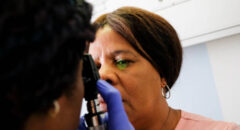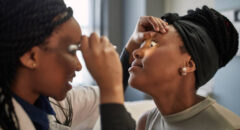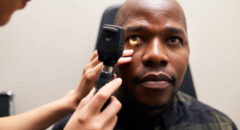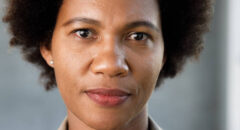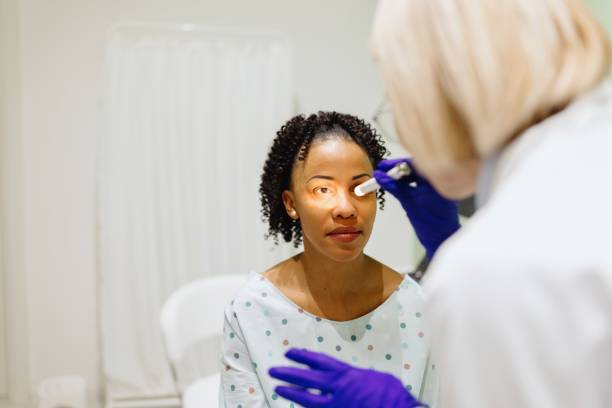
My name is Christine Gustafson, and I live in Monterey, California, with my husband, Frank Marshall, and our Siamese cat, Sweet Pea. I am a white woman sharing my story because health challenges like mine—Thyroid Eye Disease (TED)—don’t discriminate, but access to care and understanding often does.
In the fall of 2009, my life veered off course in ways I never could have imagined. At the time, I was super healthy—swimming a mile daily, cycling, and deeply invested in work and relationships that brought me joy.
Then, without warning, my body began to rebel. My heart raced at a resting rate of 120 bpm. I lost weight rapidly and felt gripped by relentless anxiety. And most visibly, my eyes began to change. They widened, reddened, and eventually pushed so far forward that they appeared to spill out of my sockets. The light burned. My face became unrecognizable, even to myself.
A barrage of tests revealed I had Graves’ Disease, an autoimmune disorder, and its cruel companion, Thyroid Eye Disease (TED). My endocrinologist was shocked by the severity of my condition, remarking that my lab results were the highest she had ever seen—an anomaly, given my otherwise vibrant appearance.
The impact of TED wasn’t just physical. It imposed a devastating burden on my social and professional life. Friends who hadn’t seen me would gasp in shock at my appearance, and children seemed frightened. I withdrew, avoiding mirrors and cameras for the better part of a decade. My work required careful explanations to put clients at ease.
Over time, I endured seven corrective surgeries before newer, non-surgical treatments became available. Today, my appearance is nearly “normal,” and I no longer stand out in a crowd. More importantly, I’ve overcome Graves’ Disease without medication, surgery, or radiation. For the past six years, my lab results have been consistently normal—a testament to persistence and self-advocacy.
My journey taught me the power of knowledge and resilience. It’s crucial to be proactive, to educate yourself about Graves’ Disease and TED, and to seek solutions. I understand the temptation to withdraw from life, to let hopelessness creep in. I’ve been there. But there is so much help available now that didn’t exist in 2009.
Today, I am part of a nonprofit specifically for TED patients, the TED Community Organization. We strive to ensure that no one faces this journey alone. We connect, educate, and advocate, recognizing that hope is the cornerstone of healing.
For those who feel isolated by disfigurement, illness, or fear: you are not alone. There is a path forward, and there are people who will walk it with you. Together, we can navigate the arduous terrain of TED with courage and community.
Learn more about a clinical trial for thyroid eye disease: UplighTED Thyroid Eye Disease
 Christine Gustafson – Executive Editor of the TED Community Organization
Christine Gustafson – Executive Editor of the TED Community Organization



